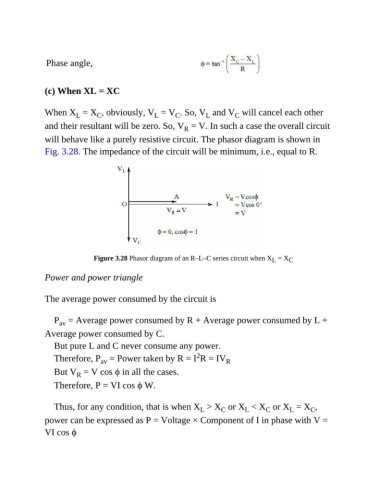Page 325 - Basic Electrical Engineering
P. 325
Phase angle,
(c) When XL = XC
When X = X , obviously, V = V . So, V and V will cancel each other
C
L
L
C
L
C
and their resultant will be zero. So, V = V. In such a case the overall circuit
R
will behave like a purely resistive circuit. The phasor diagram is shown in
Fig. 3.28. The impedance of the circuit will be minimum, i.e., equal to R.
Figure 3.28 Phasor diagram of an R–L–C series circuit when X = X C
L
Power and power triangle
The average power consumed by the circuit is
P = Average power consumed by R + Average power consumed by L +
av
Average power consumed by C.
But pure L and C never consume any power.
2
Therefore, P = Power taken by R = I R = IV R
av
But V = V cos ϕ in all the cases.
R
Therefore, P = VI cos ϕ W.
Thus, for any condition, that is when X > X or X < X or X = X ,
L
C
L
C
L
C
power can be expressed as P = Voltage × Component of I in phase with V =
VI cos ϕ

